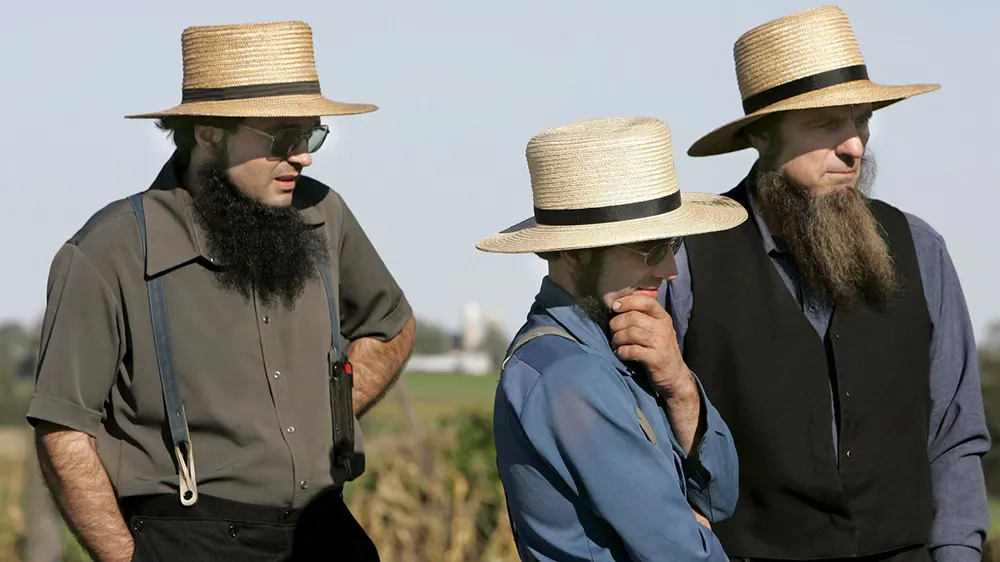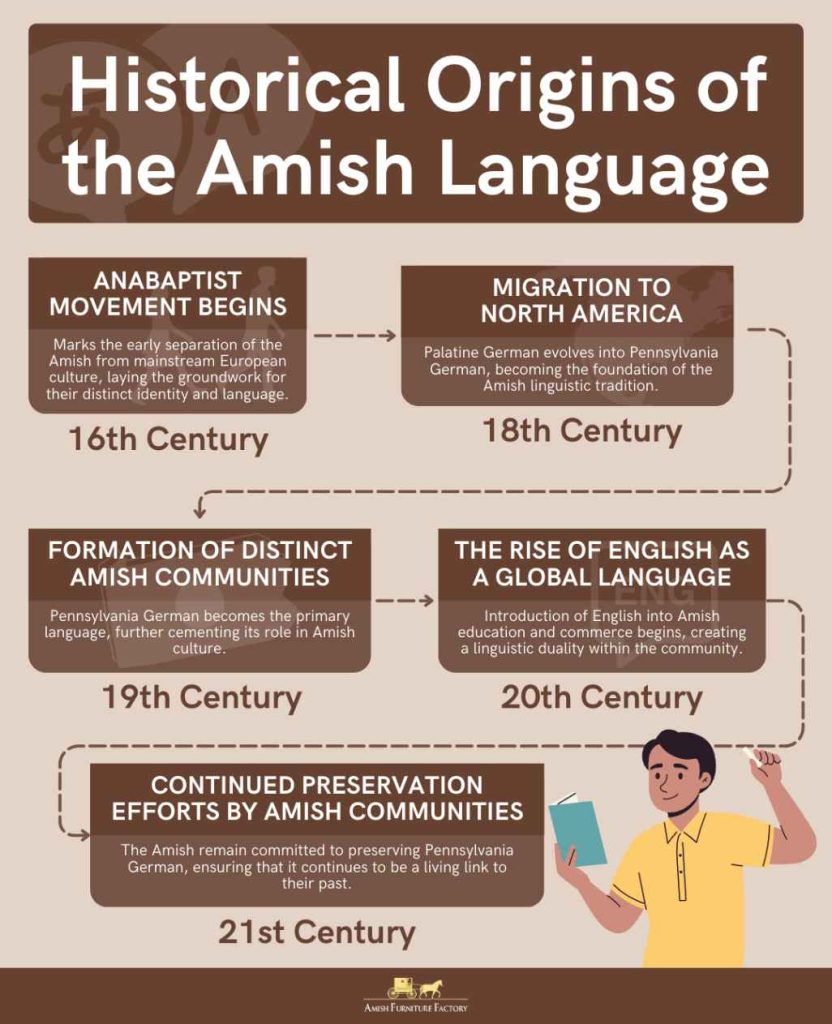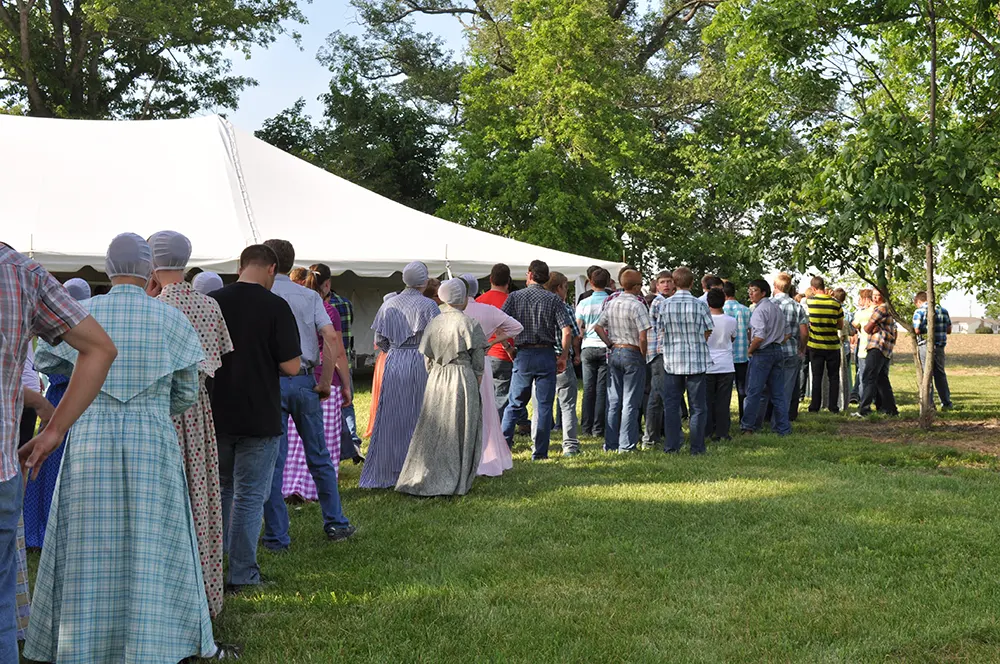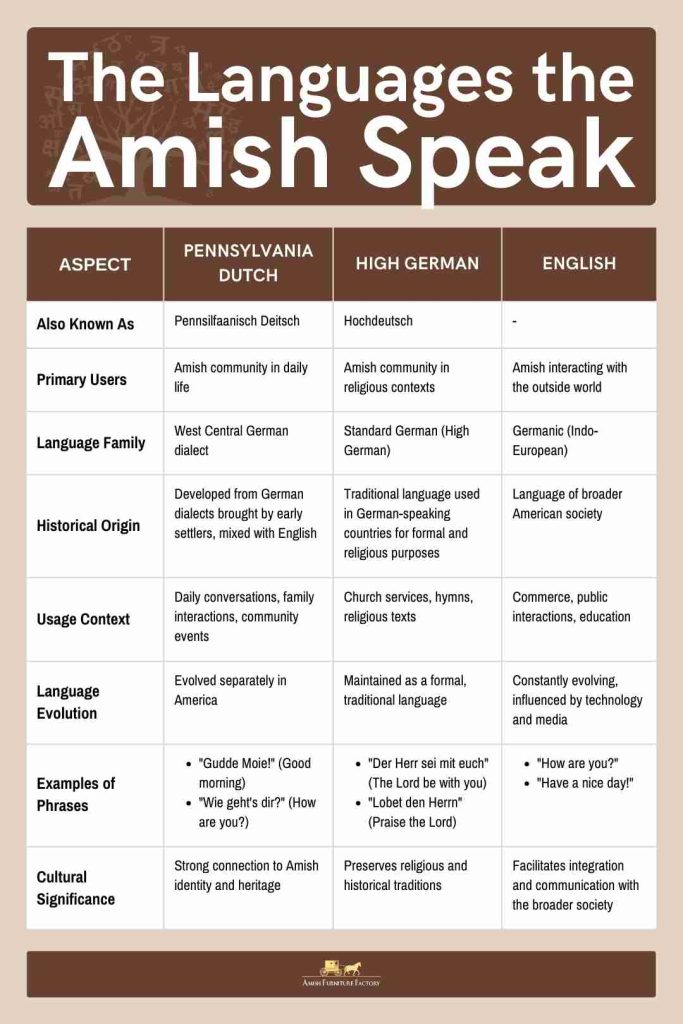
Language holds a crucial role within the Amish community, serving as a vital link to their heritage, customs, and sense of self. With a unique lifestyle centered on simplicity, communal living, and reverence for traditions, the Amish place profound value on their language. It serves as a profound reflection of their core beliefs and lifestyle choices.
Key Takeaways
- The languages spoken by the Amish—Pennsylvania Dutch, High German, and English—play a crucial role in shaping and preserving their cultural identity, history, and traditions.
- Amish people primarily speak Pennsylvania German in daily life but also use English for educational and business purposes.
- The Amish language has changed over time, but it still helps them keep their culture and traditions.
This article explores the languages spoken by the Amish, their historical roots, and their significance in preserving Amish identity.
Historical Origins of the Amish Language
The roots of the Amish language are deeply intertwined with the community’s historical beginnings and migrations. This linguistic evolution mirrors the Amish people’s transition from Europe to North America. Exploring the key milestones that influenced their language development offers valuable insights into how Pennsylvania German emerged as a fundamental element of Amish traditions and legacy.
Below is a table showing key events that have shaped the growth and preservation of Pennsylvania German, highlighting the linguistic journey of the Amish.

Pennsylvania Dutch (Pennsilfaanisch Deitsch)
Pennsylvania Dutch, or Pennsilfaanisch Deitsch as it’s known in the language itself, is more than just a way of speaking. It’s a living link to the past for the Amish community. The roots of this unique language stretch back to the 17th and 18th centuries, when German-speaking settlers, including many Anabaptists and other religious groups, arrived in Pennsylvania. They left behind their homes in Europe, bringing with them their language and customs.
These early immigrants were from various regions of what is now Germany, Switzerland, and the Alsace region of France. As they settled in America, they began to blend their dialects with the local English-speaking population. The result was a distinctive dialect of German that has evolved separately from the German spoken in Europe today.
High German: The Liturgical Language

High German, or *Hochdeutsch*, plays a key role in Amish religious life. While Pennsylvania Dutch is used in daily conversations, High German is used for formal church services, hymns, and religious texts.
At Sunday services and other religious events, you’ll hear High German being spoken. It’s the language used for reading and studying the Bible, helping to create a sense of tradition and connection to the Amish’s historical roots in German-speaking countries. In contrast, regular German, or Standard German, is the everyday language used in daily communication, media, and most written and spoken contexts across German-speaking countries.
English: The Third Language
While the Amish primarily speak Pennsylvania Dutch at home and High German in church, English plays an important role in their interactions with the wider world. English is used when Amish people engage with non-Amish neighbors, conduct business, or participate in local government and community activities. For instance, when shopping, attending public events, or dealing with various services, Amish individuals use English to communicate effectively and navigate daily life outside their close-knit communities.

The Linguistic Diversity within the Amish Community
Amish people have different groups, and each group speaks a slightly different version of Pennsylvania German. Some groups use it more often than others, depending on how traditional they are and where they live. In places where there are many Amish people, they use Pennsylvania German more often. But in places where there are fewer Amish people, they might use English more often, especially when talking to people outside their community.
Conclusion
The languages spoken by the Amish—Pennsylvania Dutch, High German, and English—reflect their rich cultural heritage and unique way of life. Pennsylvania Dutch, with its deep historical roots and role in daily interactions, is central to their identity and traditions. High German serves as a bridge to their religious heritage, while English facilitates their engagement with the broader world.
Together, these languages not only help preserve the Amish’s distinct culture and history but also enable them to navigate their place in a changing society. The ongoing commitment of Amish communities to maintaining their linguistic traditions underscores the enduring importance of language in shaping and sustaining their cultural identity.
FAQs
Do Amish children learn English in school?
Yes, Amish children learn English in school so that they can communicate with people outside of their community and gain more opportunities.
Why do Amish people speak Dutch?
Amish people speak Pennsylvania Dutch, a German dialect, because it connects them to their historical roots and ancestral language. It’s a key part of their cultural identity and daily life.
Do the Amish speak Yiddish?
No, the Amish do not speak Yiddish. They primarily use Pennsylvania Dutch for daily conversations and High German for religious purposes. While Yiddish, a language historically associated with Ashkenazi Jews, is not part of their linguistic tradition.
I wrote a book on Pennsylvania German that is scheduled to come out this coming Friday. It can be purchased on my website at http://www.speakingamish.com
Hi Lillian, Thanks for sharing this! I will check it out myself.